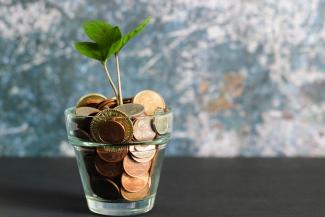
Fully Utilize Your Emergency Savings!
WARNING!!! This is not a “traditional method.”
In the finance industry we often must differentiate between savings and investments. But how do we let our savings feed our investments? Start by saving properly, if you don’t have sufficient emergency savings (typically 6 months of basic expenses) and that emergency happens (job loss, or medical issue are the greatest danger) then our savings can eat into our investments. So, let’s touch on three ways to make sure we are fully utilizing our emergency savings account!
- Make sure the account is properly funded!
When calculating how much you need in your emergency savings account there are a couple of ways to go about it. An easy example would be to just take 2-4 months of pretax income, so if you make $10,000 a month you have between $20,000 and $40,000 in your emergency savings. You can also take 3-6 months of expenses, so if this person makes $10,000 a month, but spends $7,000 a month, then they need between $21,000 and $42,000. Let’s look at what the consequences might be if someone has an underfunded account: Let’s say this person only has $12,000 in their emergency savings account, and they lose their job. If there is no new job in 7 weeks, then we will have to start liquidating other accounts. If their other accounts are qualified retirement accounts and they are under 59 ½ then they could receive a 10% penalty to go along with possibly having to pay income taxes on the money, they withdraw. Or they could tap into their home equity with a cash out refinance or HELOC, but this would add years of debt onto this individual. This is why a properly funded emergency savings account is important.
- Aim for a Higher Interest Rate!
The average annual interest rate of a typical savings account in America is 0.39% according to Fortune. There are other cash alternatives that are available, such as a certificate of deposit or CD, or money market mutual funds, or treasury bill. However, none of these really provide a lot of positives over the traditional savings account. Money Market funds are liquid, but don’t typically pay a significantly higher interest rate. CDs are illiquid for a period, even if it is short term. My solution is to have these funds in a brokerage account. The brokerage account offers liquidity, and the ability to get more interest over the long term. By purchasing a bond fund, in a brokerage account, and opting for dividend reinvestment, we can see returns closer to 6% over the long term. If we take $30,000 and see 5% returns vs. $30,000 with the .39% return (the average bank savings) over ten years, we see a gain of $1190.75 in our traditional savings account, against a gain of $18,866.84 in our brokerage bond fund account with dividend reinvestment. This is a difference of $17676.09 over ten years. If we take the scenario in part one, they only need a max of $42,000 in their savings, so every dollar over that can go into other retirement assets.
- Have Sufficient Credit Availability
In order for this strategy to work out, you will need a stopgap for emergency expenses. Things that pop up that could cost thousands of dollars, we can usually pay for by just moving money from a typical savings account to the checking account. This is the biggest benefit that the savings account has over the brokerage. However, this isn’t the old days anymore, and thanks to technological advancements, we can get money out of a brokerage account and into your checking faster than ever before. However, it still might take a couple of business days, which is where having sufficient credit available is important. For example, if you have a car problem that is going to cost say $4,000 and that money is in your brokerage account, you can pay with the credit card, and then when you get the money out of your brokerage account in a couple of days, you pay off the credit card. This is a little extra work for when emergencies do happen, but there are benefits to doing it this way. Number one being the higher interest received in the brokerage account, and number two being the ability to build up credit for future purchases.
I hope this has opened your eyes to how to let your emergency savings feed your investments. If you have questions on how to invest this money in your brokerage account, you can use the contact us tab. See your Retirement Goal Grade in under 5 minutes here!

